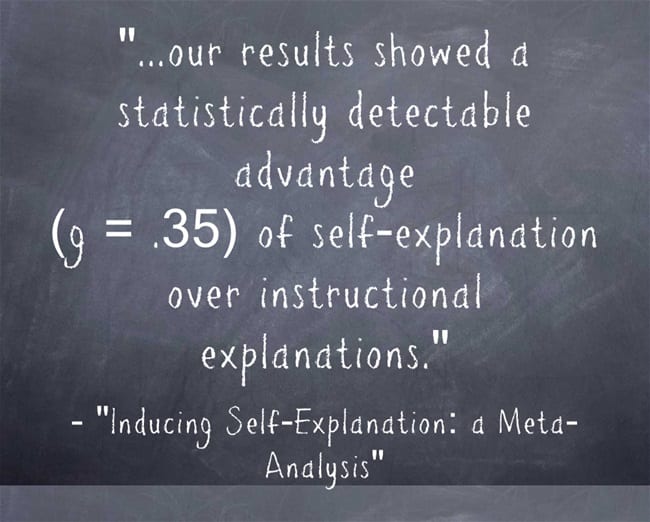This blog has recently gained many new readers. Because of that, I thought it might be worth sharing a “A Look Back” where I periodically share my choices for the most important posts from the past twelve years. You can also see all of my choices for “Best” posts here.
This post appeared earlier this year.
As regular readers know, I’m a big advocate of inductive learning (see The Best Resources About Inductive Learning & Teaching), where students are guided to create their own understanding of concepts (including grammatical rules). Direct instruction certainly has its place, but I also think it has to be kept in its place (though, at the same time, it’s important to remember that “direct instruction” has multiple definitions – see The Best Posts Questioning If Direct Instruction Is “Clearly Superior”).
Lecture – not so much (see The Best Research Demonstrating That Lectures Are Not The Best Instructional Strategy).
A new met-analysis of 64 studies on the concept of self-explanation, which the researchers define as “a process by which learners generate inferences about causal connections or conceptual relationships” has found that, as the quote at the top of this post highlights, it is more effective than having teachers give the explanation.
My understanding of self-explanation (see The Best Resources For Learning About The Value Of “Self-Explanation”) is that inductive learning and teaching is one form if it, but it can also take many others).
The study is titled Inducing Self-Explanation: a Meta-Analysis.
It’s behind a paywall, though there are ways to gain access to it even if you don’t have a library account at a university (see The Best Tools For Academic Research).
I would recommend that teachers read the entire paper. It provides a lot of different practical examples about how educators have prompted self-explanation and, unlike most academic pieces, seems pretty readable.




Recent Comments